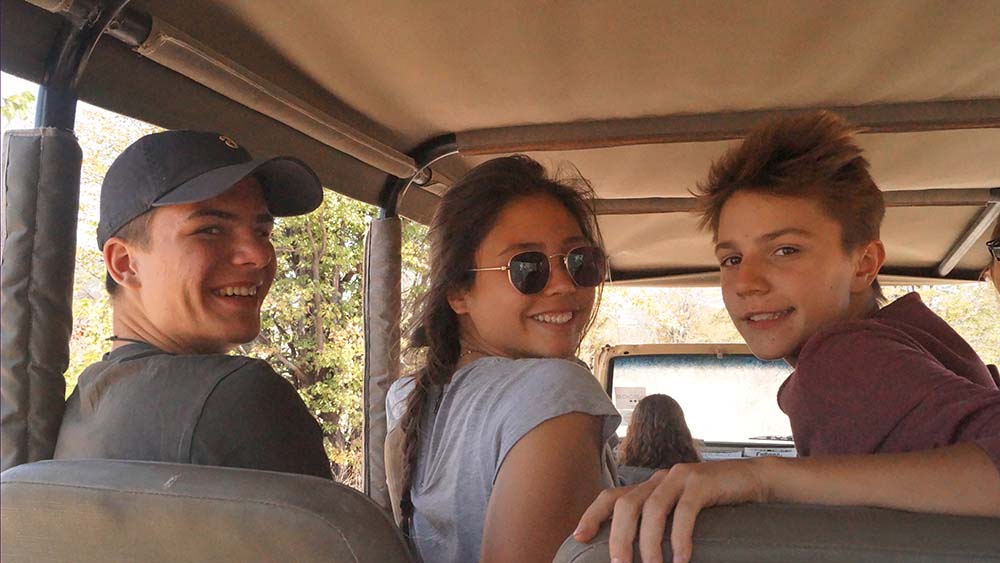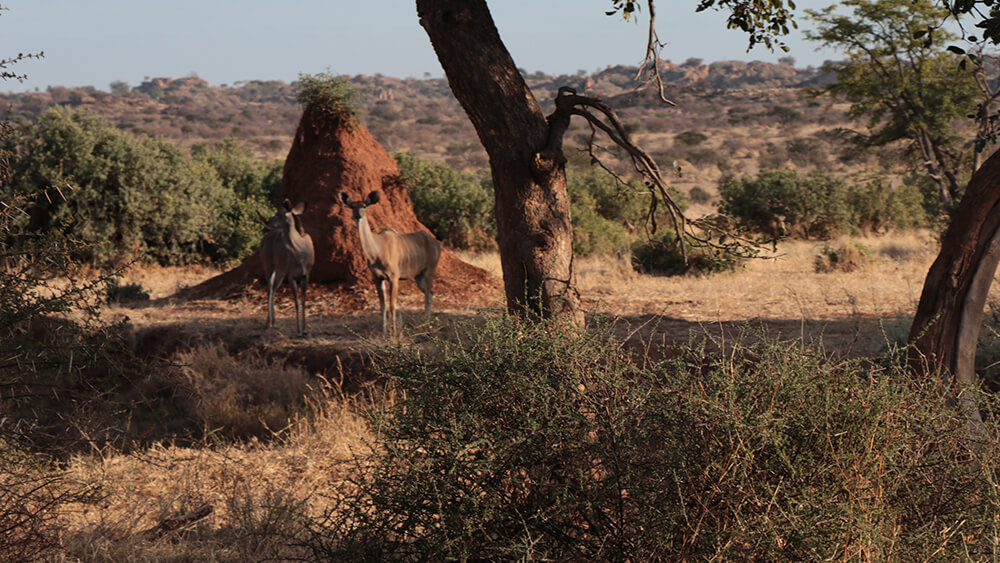1) Hi Nada, can you tell us what you've been up to since graduating from THINK Global School in 2022? Since graduating in 2022, I've been pursuing a passion I found while at TGS, sustainability, and I am currently majoring in engineering in renewable energy systems at Al Akhawayn University, in Ifrane, Morocco. But there is way more than that! I've had a chance also to explore the world of...
Read MoreMacrotermes Natalensis: more commonly known as fungal-growing termites, or the most under-looked species in all of Africa.
Living in complex colonies, these insects practice the caste system; a division of labor is utilized with the roles of soldiers, workers, and the king and queen all determined by birth. Similar to humans, their social structures are easily identifiable as each individual establishes their own appearance, despite their genetic material being identical. Every role is diverse and focuses on the greater whole of the mound, ensuring that they maximize the potential of having a cohesive community.
A chimney shooting up from the center of a termite mound allows for a highly effective air-conditioning system, resulting in a constant temperature of precisely 32℃ as well as a long lasting legacy. After the extinction of a colony, they provide homes for up to 27 different species including porcupines, spotted hyenas, and wild dogs.
An ecological force to be reckoned with, the services they provide are vital to the entire ecosystem as they feed on dead and decaying organic material.
Before you disappear and assume that this is a research paper on the brilliance of termites, it’s not (although they are pretty spectacular). Instead, this is a story of how fungal termites in the Kalahari desert in Botswana taught me how to not be afraid of being small.

Kuala Lumpur, Malaysia
This story begins in the comfort of my own home back in Kuala Lumpur, Malaysia. Icy air spewed out of the AC, fogging up the windows and pulling the hairs on my arm upright. Blankets hugged my body, protecting me from the cold as the room buzzed with the beat from the music that was playing from my speaker on the table. Lights from the neighboring buildings beamed through and trickled along the folds of the sheets. Tick tock tick tock. 8:19pm. Nights like these were very common where I would lie and look at the ceiling, doing absolutely nothing except thinking about absolutely everything.
Appropriate. This all felt… appropriate. Pleasant. Satisfying? Serene. I knew where I was, and everything that surrounded me was familiar. Yet the size of my existence still lingered in my mind as I glanced out my window to find hundreds of buildings, all housing thousands of humans just like me.
These are the moments that really hit me hardest; I’m tiny. In a world that contains billions of people, I’m a raisin in a pool of trail mix. If I look outside, I can see into the apartment of a middle-aged woman, see her dog as it runs past her in the living room. Three floors above her, a toddler, occupied by the harsh light of the widescreen TV hung against the opposite wall. The building across, on the bottom floor, a couple strolling through the lobby, their hands interlaced.
All these people face experiences that differ from each other, and although overlaps occur, they lead their own lives that are incomparable to my own. The underlying dilemma with this is that there’s a difficulty to attempt to fathom the volume of diversity present. My train of thought makes stops at multiple stations, each one being a reminder of how extensive this planet is, before finishing at it’s final destination: how can a girl like me make a difference in the world when there’s just so much of it?
Little did I know my bubble of security would be popped and I would have to forget about my lack of size. A new school, with new people, whilst living in eight new countries is definitely one way to go about stepping out your comfort zone. So three flights, six car rides, and four airports later, I arrived in country number one: Botswana.
Entering the travel lodge in Gaborone, my left hand clutching my suitcase and my right hand clinging onto my passport, I met the eyes of my classmates. As I introduced myself to the twenty-nine other eager teenagers in the room, I knew for a fact that this would be an adventure of a lifetime.
Starting with a ten-day trip through a narrow fringe of land at Botswana’s eastern border, I would have never envisioned the beauty that would lay in front of me. Drives through Tuli Block on the back of trucks through dirt and the arid air filled the next few days as we sat through game drive after game drive.

Keo, Vax, and Isabelle driving through the Tuli Block. Photo by Lily Wai-E.
Yellow hornbills chirped, accompanying the break of dawn as the sunlight leaked onto our freezing faces. The trembling engine roared and then came to a stop as I sat huddled in the back seat, trying to conserve as much warmth as possible. Craig, our guide, motioned for us to climb out of the vehicle and walk near to a section of vegetation. Puzzled, I tried to understand what was so important for us to see when suddenly, a hush fell over the crowd as we noticed the striking sculpture that was stood before us: the termite mound.
“Let’s not be fooled by their size. They’re one of three keystone species!” Craig declared, breaking the silence.
“A keystone species?”
“Them, alongside hippos and elephants, significantly alter the habitat surrounding them, thus affecting large numbers of other organisms. They play a crucial role in how the ecosystem functions. In fact, without their existence, the ecosystem would dramatically change or cease to exist at all,” explained Craig. Tired and not ready for new information, we stood around impatiently waiting for the chance to hop back into the truck. Clearly, we don’t do well with 6AM wake-ups.
On the bumpy ride back to camp, the wind playing with my hair and the dust settling on my skin, the idea of these tiny creatures sticks with me. I’m perplexed, completely and utterly confused at the fact that a termite has such an impact on something as large as an ecosystem. I suppose you could infer that they’re are the stars of the ground; you have to make sure there’s no other light shining in order to see them, but when you do, it’s the most prodigious sight.
So here I am, a week into my trip to Botswana and I’ve discovered the power of this minuscule critter, displaying the lack of correlation between size and the ability to make a difference.

A termite mound looms in the distance. Photo by Isabelle R.
Fear is an emotion that accompanies any sort of change, especially with the self doubt that rises when attempting to do something bigger than yourself. The feelings of consternation that coexist with the idea of jumping into the unknown are incredibly scary, particularly when my relative size makes me question whether it’s even possible. However, I think I’ve come to realize that ultimately, I’m just a termite in a world full of hippos and elephants.
When speaking about Botswana, termites are the last thing that come to my mind, which is exactly my point. Should I really be afraid of this limiting factor of magnitude when there’s already a species out there that defies that entire mindset? Patrick Overton says:
“When you walk to the edge of all the light you have and take that first step into the darkness of the unknown, you need to believe that one of two things will happen; there’ll be something hard to stand on, or you’ll be taught how to fly.”
And that was the day that just like termites, I would learn how to fly.